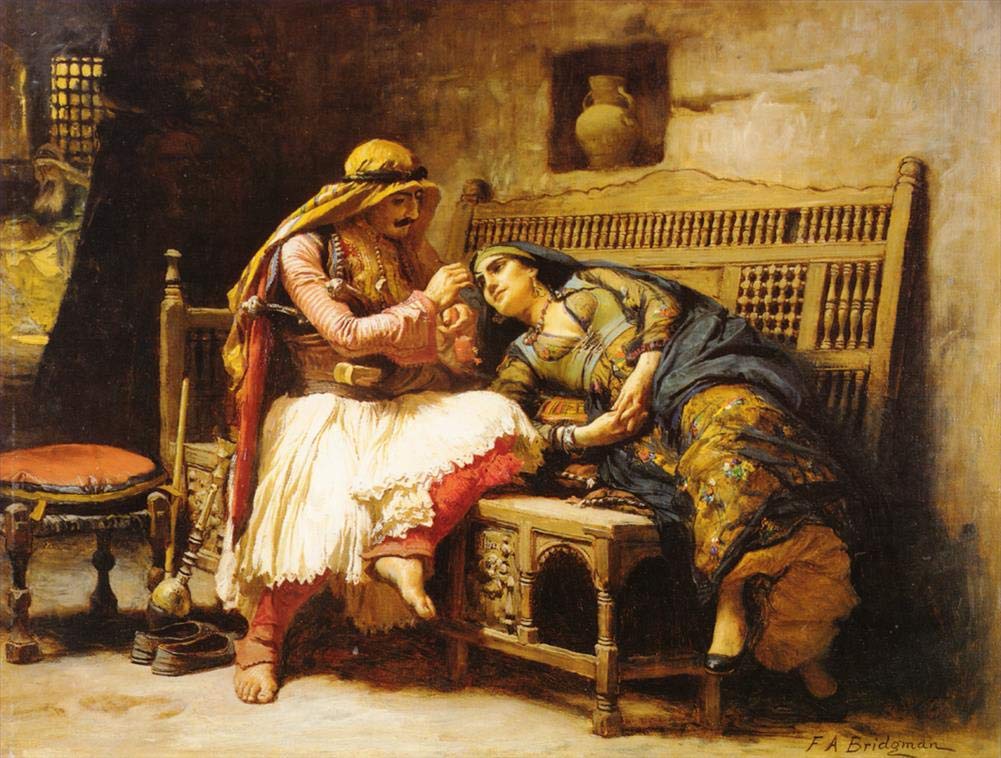Society
8.11.2023
The different degrees of love in Arabic

Ancient Arab societies were fond of poetry, which is why the Arabic language evolved to become highly poetic. In Arabic, there are many expressions that illustrate the different degrees of passion, from the initial spark to the heights of ecstasy.
Al-hawa
Among these emotions, al-hawa is the harbinger, embodying the initial spark that ignites the flames of affection. It’s a world of undefined emotions, similar to the butterflies that accompany a budding infatuation. This is where the journey begins, where hearts remain untamed and feelings incipient.
Al-sabwa
Moving from attraction to joy, al-sabwa describes the camaraderie that precedes commitment. Derived from the Arabic word al-siba, meaning childhood, this stage illustrates the unconstrained delight of two people immersed in each other, before they consider labeling their relationship.
Al-shaghaf
With al-shaghaf, passion gushes forth, entwining hearts in a web of affection that leaves them love-struck. The word itself refers to al-shaghafa, the outer layer of the heart.
Al-wajd
As the adventure continues, al-wajd looms on the horizon, an immersion in the thoughts of the beloved that transcends every waking moment. You become preoccupied, wanting nothing more than to share every moment with your loved one.

Nasreddine Dinet (1861–1929), Love’s Martyr, oil on canvas, 116 × 146 cm, Private collection. Wikimedia Commons.
Al-kalaf
Next comes al-kalaf, a stage of deep nostalgia mixed with the bitterness of struggle and pain. Here, love is not just an emotion, but a visceral experience that leaves an indelible mark on the soul.
Al-ishk
Al-ishk comes later, as the lovers become intimately familiar with each other. It’s not a passing infatuation, but a deep, abiding affection that stands the test of time.
Al-shawq
Al-shawq, a stage marked by nostalgia, signifies an attachment that defies distance and time. It’s a love that tugs at the heartstrings, a bond between souls that refuses to be broken.
Al-wasab
Yet love is not always synonymous with happiness. Al-wasab reveals the dark side, where pain overshadows joy. It’s a scene that seems tailor-made for epic love poems, the kind of love that tests the limits of human endurance.
Al-istikana
Descending even further into the abyss, al-istikana depicts the corrosive nature of submission in toxic relationships. It’s a stage where love mingles with suffering, where one person’s very identity is eclipsed by the dominant force of another.

Eugène Delacroix, Femmes d’Alger dans leur appartement, 1834, 180 x 229 cm, h/t, Paris, Louvre Museum, Wikimedia
Al-wedd
Al-wedd is a stage where love and friendship merge into an unbreakable bond. Couples become examples of companionship, embodying a love that is both selfless and delicate.
Al-kholla
Approaching the pinnacle of the degrees of love, al-kholla signifies a love and friendship so deeply rooted that they become an indivisible part of the heart. At this stage, belief in a soulmate takes root, an unshakeable conviction that this person is “the one.”
Al-gharam
As love matures, it transforms into al-gharam, an attachment that defies separation. It’s a love that withstands storms, a bond that persists despite obstacles and draws lovers back to each other again and again.
Al-hoyam
At the zenith of all these emotions comes al-hoyam, the stage of love when reason surrenders to madness. It’s a state of total insanity, where love becomes a driving force that defies logic.
popular

